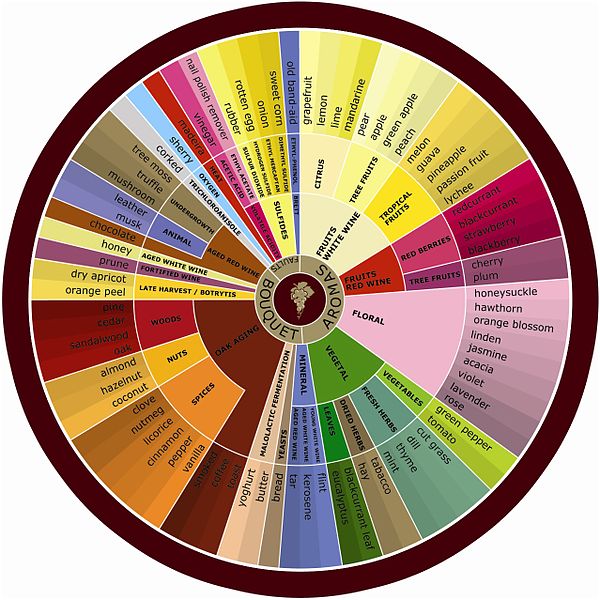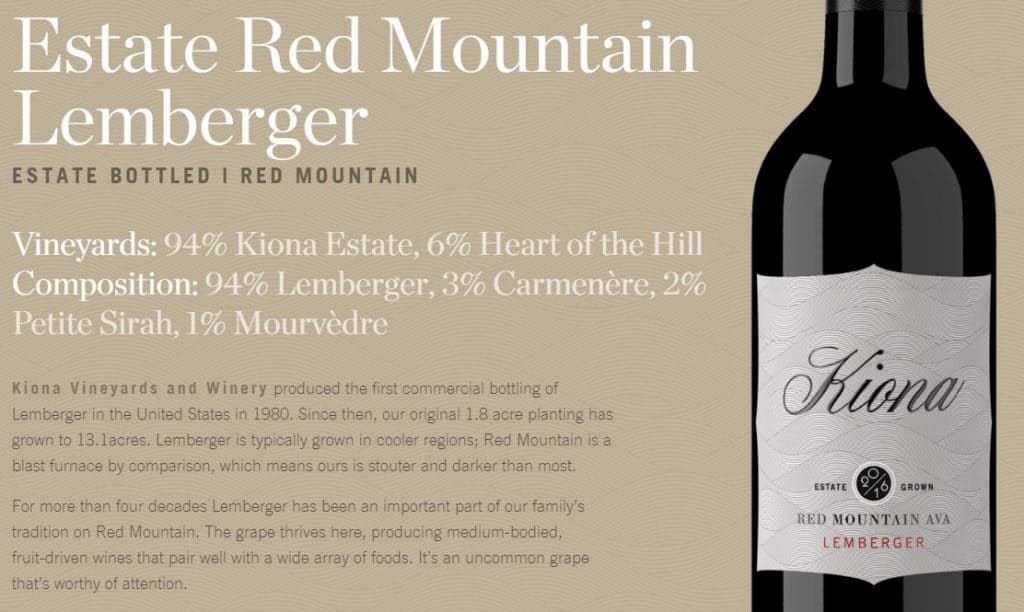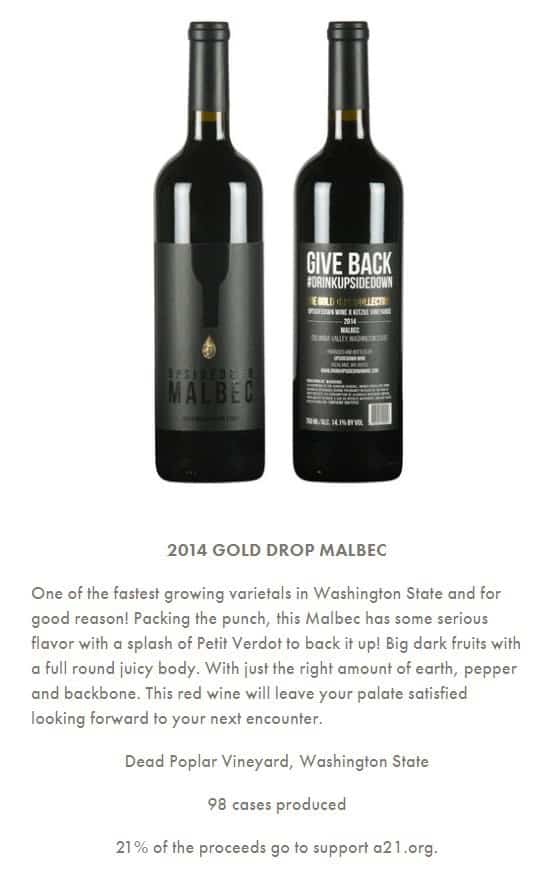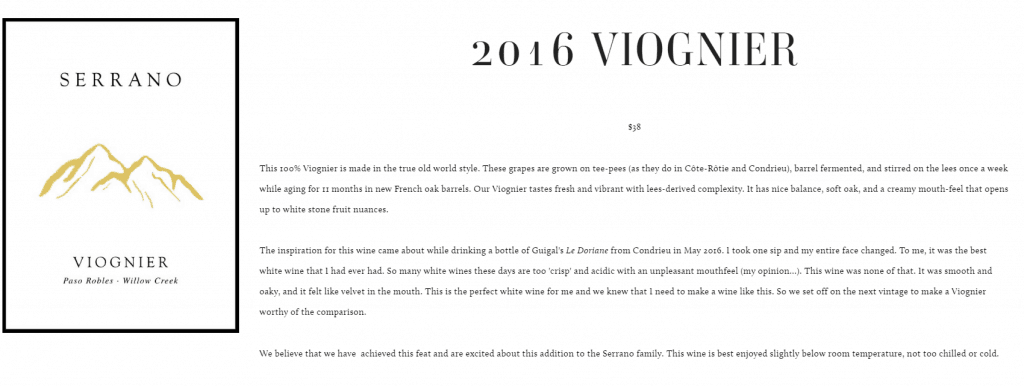JJ Williams of Kiona Vineyards did a terrific write-up on the problem with winery tasting notes. If you own a winery, this is a must read. Tasting notes are certainly one of the necessary evils of selling wine.

Next time you’re at a wine shop, look at back labels. Try to count how many times you see the words chocolate, mocha or cacao used in tasting notes.
For wine students, particularly those studying for Unit 1 of the WSET Diploma on the Business of Wine, it’s helpful to critically examine the usefulness of these notes.
Whether on the back label or website, we should ask if tasting notes really help consumers in selecting wine. Do flourished descriptions of flavors, bouquet and mouthfeel help distinguish one winery’s wine from its thousands of competitors?
Do they answer the important question of “Why should I buy this wine?”
Probably not.
In his post, Williams notes the usual results of these tasting notes.
Enter the wine marketer. We interject ourselves into the equation by telling you what to do, and how you’re going to do it. If I say, “now this Cabernet has a really nice chocolate note,” there are three potential outcomes that I think are the most likely:
1.) The power of suggestion is very strong. If I say chocolate, you taste chocolate.
2.) You don’t taste chocolate. You’ve been eating chocolate for a long time, and this is not that. Since I am speaking from a position of authority, you decide you’re doing something wrong, and slowly nod your head in faux agreement.
3.) You don’t taste chocolate. You’ve been eating chocolate for a long time, and this is not that. You are suddenly aware that your eyebrow is twitching because you’ve just realized that I must be full of $*%#. You slowly nod your head in faux agreement.None of these are good outcomes.
— JJ Williams, Hitting the Wrong (Tasting) Note?, 12/11/18
What are the benefits of telling consumers that a wine has notes of chocolate? Sure, there may be a halo effect on the wine from positive associations with chocolate. That may help someone pick up a bottle. But there is also a risk of negative associations backfiring too. Back in my retail days, I once had a customer get turned off by a wine described as chocolaty because she was lactose intolerant. (Yeah, I know.) But you get the same issues with virtually every descriptor.
If you think of the tasting note, on a website or bottle, as valuable real estate—are overly common (and, ultimately, subjective) words like “chocolate” truly worth that space?
Putting That Real Estate To Work.

Some winery tasting notes feel like they threw darts at the Aroma Wheel and wrote down what they hit. I once had a California red blend with a back label describing flavors of orange blossom, fig, hazelnut, chocolate (*ding*) and hay.
Consumers pick up bottles to read back labels and will often visit wineries’ websites to buy wine or find more details. This space is valuable. Extremely so.
As much attention and care that a winery puts into crafting stylish front labels and web-page design, should be put towards their tasting notes as well. Wineries need to leverage this space.
Writing the same boring tasting notes populated with platitudes and whatever descriptors they get from the Wine Aroma Wheel is not going to cut-it. Wineries have to give consumers a reason to take home their wine over the multitudes of other bottles being described with those same tasting notes.
A tasting note should convey what sets one “balanced, Bordeaux-style wine [that] coats the palate with a velvety richness and fine tannin structure” apart from every other balanced, velvety rich and finely tannic wine.
Otherwise, it is just blowing the same useless marketing BS that virtually every other bottle is blowing. Where is the consumer being helped in this?
Outside the Bottle — In the Consumer’s Cart
Williams highlights a brilliant approach that Kiona uses in crafting their tasting notes. They categorize their “wine speak” into what relates to “Outside the Bottle” details and what pertains to the more vague and subjective “Inside the Bottle” experiences.
1.) Outside the Bottle. This category encompasses everything that is interesting about a wine that happens outside the bottle. Vineyards, geography, growing philosophy, winemaking goals, winemaking process, blending process, etc.
2.) Inside the Bottle. This category encompasses everything that the drinker experiences once the cork is pulled.We make a concerted effort to talk about the “OtB” aspects of a wine only. This extends up and down our operation, including our website, our tech sheets, our tasting room collateral, our employee training and our general vernacular. In the rare circumstances where we dabble in “ItB” language, it’s almost always in generalities. You might read something along the lines of “fresh black fruit characteristic”, but never “brambly vine-ripened summer blackberries.” — JJ Williams, Hitting the Wrong (Tasting) Note?, 12/11/18

Example of Kiona’s “Outside the Bottle” approach for their Lemberger.
Inside the bottle, almost all wine is the same–especially before a consumer pulls the cork. It has potential and possibilities but every wine is promising potential and possibilities.
However, what is outside the bottle makes the wine unique. It’s the people, the place, the story and craftsmanship that sets it apart from each and every other bottle.
That is real estate that pays for its space.
Examples of Tasting Notes That Work
On their website, Kiona has several examples where they use “Outside the Bottle” tasting notes to make their wines distinctive and interesting. One I particularly like is for their Lemberger shown above. This is a bloody hard wine to sell because of the name. But Kiona gives some intriguing history as well as details about what makes their Lemberger different from other domestic examples and Austrian Blaufränkisch.
Personality Not Platitudes

I don’t know why but “Dead Poplar” sounds like an awesome vineyard name.
Upsidedown Wine by Seth & Audrey Kitzke note that their 2014 Gold Drop Malbec is made from one of the fastest growing varieties in Washington State. That piques curiosity. Why are people so excited about Washington Malbec? Maybe I should buy a bottle and find out.
The tasting note also shares that the wine has some Petit Verdot (another grape getting a lot of buzz) blended in to make it distinctive from other Malbecs. Additionally they highlight the small production (only 98 cases) and single vineyard sourcing. While it does have the typical big dark fruits and pepper descriptors of many other Malbecs, those notes act as side bars rather than the main feature.
For their 2016 Viognier, Serrano Wines injects a ton of personality into their tasting note by sharing that this wine was inspired by drinking Guigal’s Le Doriane Condrieu.
Instead of being grown with the typical cordon or guyot vine training methods that most domestic Viogniers use, Serrano points out that they’re using a special tee-pee (or eschalla) training common in Condrieu and Côte-Rôtie. (Their website has pictures of this unique–and very labor intensive–vine training.)
While many consumers are not going to care much about vine training, Serrano’s tasting note works by highlighting why the consumer should care–i.e. why this bottle of Viognier is different from all the other options they have.
That is leveraging every bit of precious real estate to stand out from the pack.

When evident care is put into crafting a great tasting note that tells a story, it tells the consumer that a lot of care went into crafting the wine as well.
Instead of being a “necessary evil”, tasting notes can be tools.
Wineries should follow the advice of JJ Williams of Kiona. They shouldn’t farm this task to marketing departments writing the same blathering blurbs. They need to think “outside the bottle” and use these notes to tell consumers their stories.
Of course, wineries will benefit by selling more wines. But consumers will benefit as well from better tasting notes.
Instead of standing in an aisle, reading label after label of “fruit-forward, divinely complex, approachable and exceptionally food-friendly“ and “layered aromas of black currant, blueberry and cherry [that] are accentuated by an authentic barrel bouquet of hazelnut, cocoa powder [ding], and dark roasted coffee“, they actually get words that have value and meaning.
They get words that tell them something–about the people and place this wine comes from. Most importantly, they get answers to the question that all consumers have when they pick up a bottle.
Why should I buy this wine?
